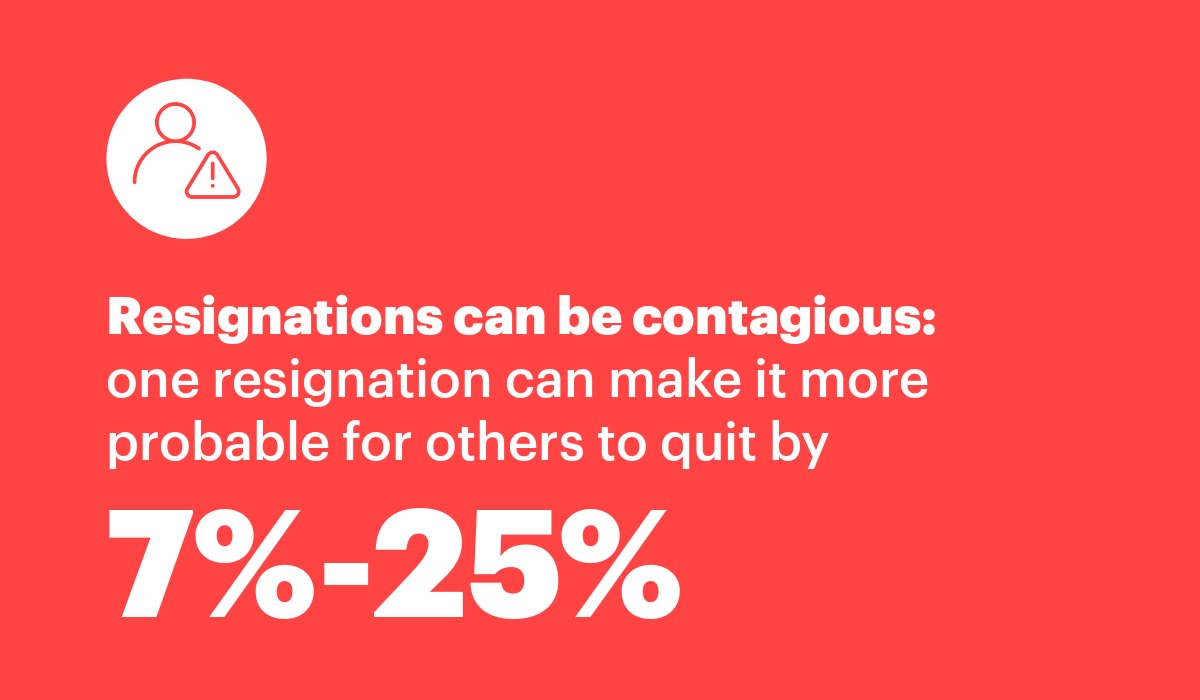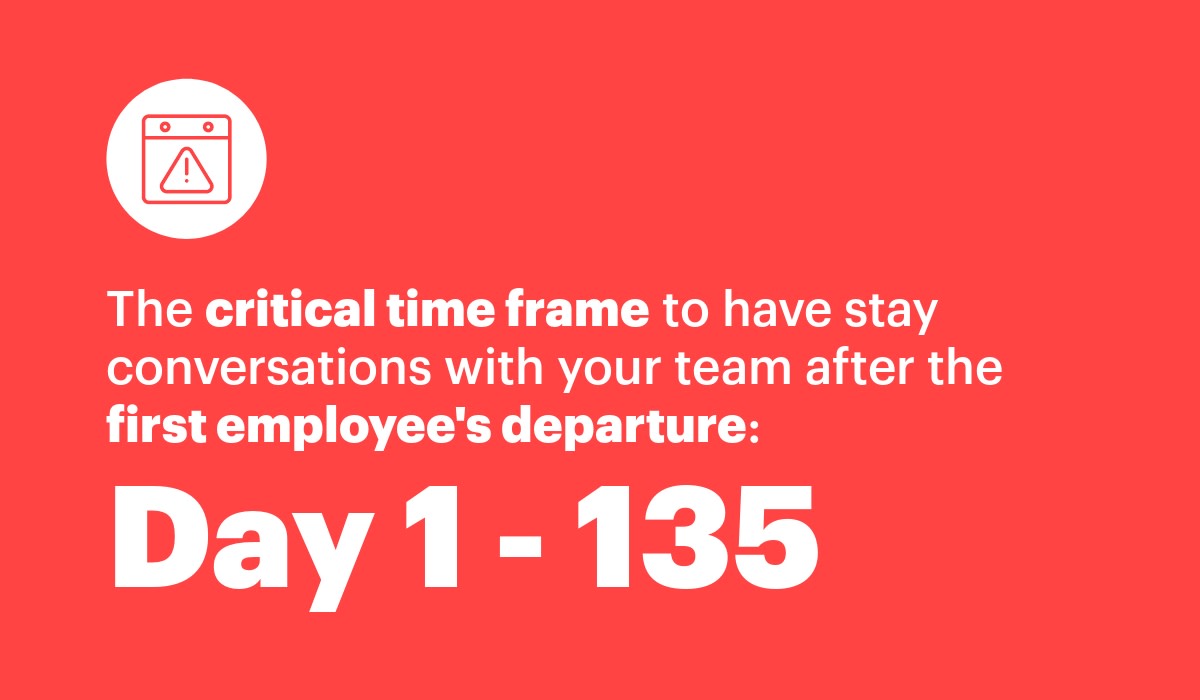Turnover Contagion Is Real–and The Clock Is Ticking
This latest Visier Insights Report looks at turnover contagion. Employee turnover contagion is real, and managers really need to act fast. Learn more.

Employee turnover is an ongoing reality for companies of every size, across every industry. This year, employee resignation rates have remained at an all-time high and are taking a toll as even managers are throwing in the towel. What’s more—employee turnover is contagious and can exponentially increase replacement costs.
At Visier, we were curious about this contagious effect and the common fear that one person’s resignation can have an impact on the retention of their team members. This phenomenon is commonly called turnover contagion, and refers to the tendency for employees to be influenced to look for new jobs when their coworkers announce that they are looking or have found another job.
We wanted to know: Is turnover contagion a real phenomenon that can be observed? And if so, what can organizations do to mitigate its risks? We looked at our own community database of >17 million anonymized employee records to study if turnover contagion is real. The answer: Yes—and managers don’t have much time to slow or stop the impact.

Employee resignations are interconnected
Employee resignations are not isolated events. A decision like someone quitting their job almost always has a ripple effect on the people around them. Especially in today’s highly interconnected workplace, the underlying motivations of one person’s decision to resign are not lost on their peers. We found, depending on team size, the probability of additional team members leaving after that first resignation increases by between 7% and 25%.

The current employee turnover landscape
Even in the light of concerns about what might be a “shallow” recession, losing employees through voluntary turnover continues to be a problem for many organizations. Employment statistics show upwards trends in private sector job creation, unemployment is still low, and many organizations continue to hire—and try to retain—employees to feed a post-pandemic growth period.
In times when employee retention may be one of the most critical business efforts, ignoring the fact that turnover contagion is real may lead managers to miss the opportunity to really focus on trying to keep their staff.
The question becomes: How long after the first resignation does the risk of turnover contagion in a team persist? And what can managers do about it?
3 tips for managers to mitigate the risk of turnover contagion
1. Timing is key
Take the moment of an employee’s resignation as an opportunity to revisit the rest of the team’s engagement. and remember: You need to act quickly. The critical time frame to have those “stay-conversations” is between day one and day 135 after the first team member’s resignation. Don’t assume that one team member’s departure won’t affect the others, but instead, engage them in conversations around their reasons for staying.

2. Get their risk profiles
Ask your HR or people analytics team if they can provide a risk profile on your team members. Questions to assess a risk profile include:
How long have team members been in their current role?
What are their levels of engagement, productivity, learning and collaboration patterns?
When was the last time you talked about their performance status, compensation level, or promotion eligibility?
What do you know about the team’s burnout risk?
Answers to these questions can provide a guideline for conversations with team members and reveal valuable insights.
3. Look out for pre-quitting behaviors
One argument in favor of having such conversations on a more regular basis is that you can spot early signs of disengagement quicker. Staying connected with your team not only helps you gauge how they are doing on a daily basis, but it will help you notice changes in their behaviors as well.
SHRM listed so-called “pre-quitting behaviors” that people may display before handing in their resignation. For example, a noticeable decrease in productivity at work, lower commitment levels on longer term timelines, or even a lessened interest in trying to please you as their manager could be indicative for resignation plans. Staying on top of such developments can be helpful to both creating better relationships with your team members while also remaining at the pulse of their engagement levels.
Know the risks. Reduce employee attrition.
The bottom line: While it won’t be possible to prevent resignations from happening altogether, there are a few things effective managers can do to mitigate the risk of turnover contagion. Ideally, their organizations provide them with data and tactical recommendations on how to approach talent retention on a daily basis.
To learn more about turnover contagion and how you can mitigate its risk at your organization, read our new report, Turnover Contagion Is Real.



